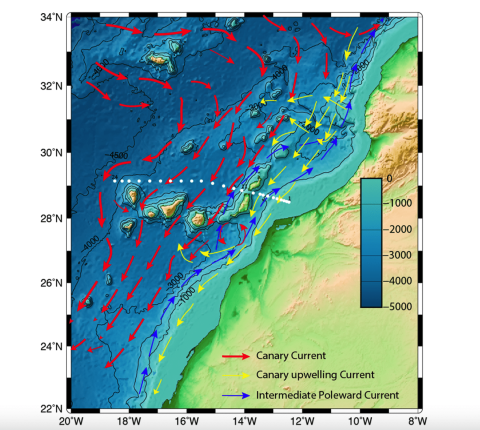Ph.D. Program in Oceanography and Global Change at the Canary Islands, Spain
Submitted by ignacio on Sun, 06/25/2023 - 20:14

The Atlantic Meridional Overturning Circulation (AMOC) transports 18 Sv of water that carries more than 1.5 PW of heat from the equator to high latitudes, playing a determining role in the regulation of the climate in Europe. An important component of the AMOC is the Subtropical Gyre, the largest oceanic structure of the North Atlantic. The Canary Basin sits at the boundary between the Subtropical Atlantic Gyre and the upwelling waters form the Canary Current Large Marine Ecosystem (CCLME) off the coast of northwest Africa, being an ideal place for the study of the Subtropical Gyre variability.
In order to understand the mechanisms governing the internal variability of the ocean, and therefore the climate, long systematic observations are needed. For this reason, since 2006, the Spanish Institute of Oceanography carries out the program deep hydrographic section around the Canary Islands (RAPROCAN), to establish the scales of variability in the decadal-subdecadal range in the eastern margin of the Subtropical Gyre. RAPROCAN takes place twice a year, in spring and autumn, and comprises of about 50 stations where current velocity, temperature, salinity, pressure, oxygen, turbidity and fluorescence (CTD) are measured.




Add new comment